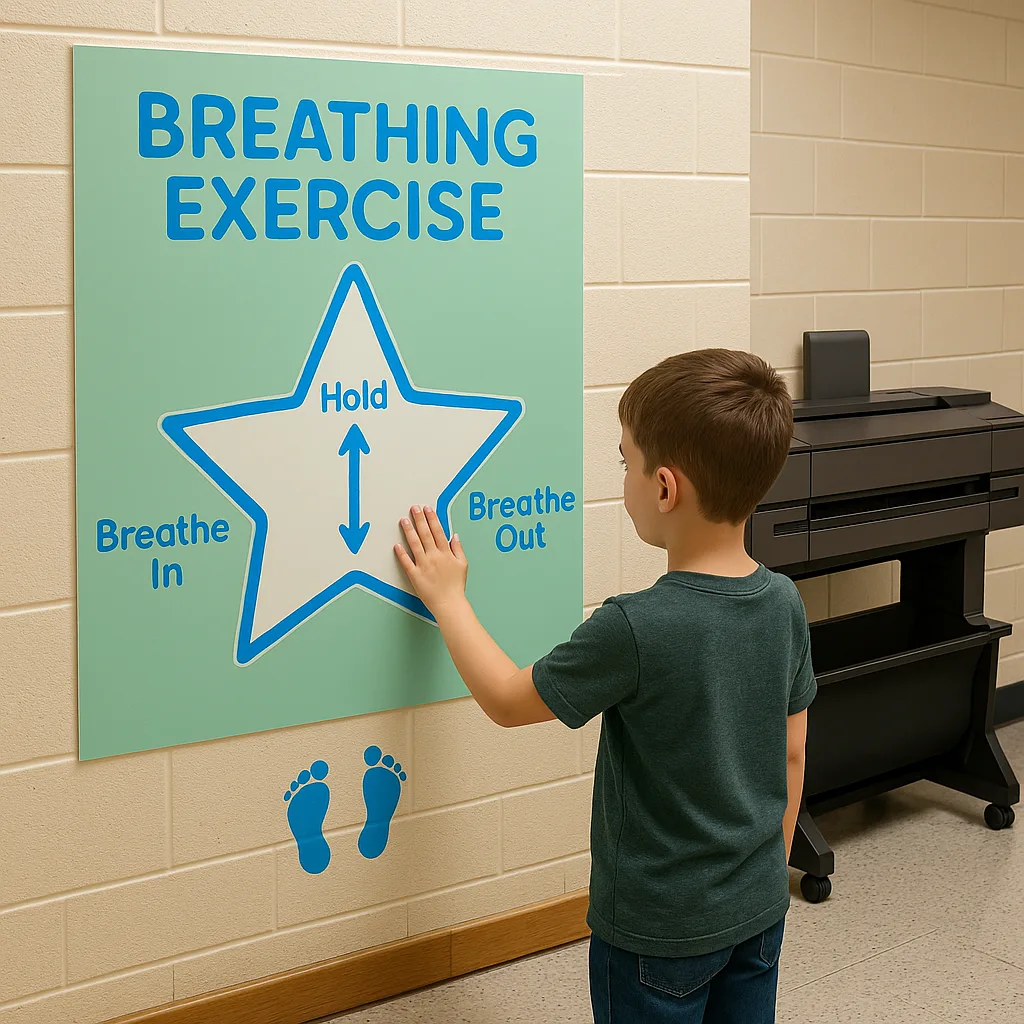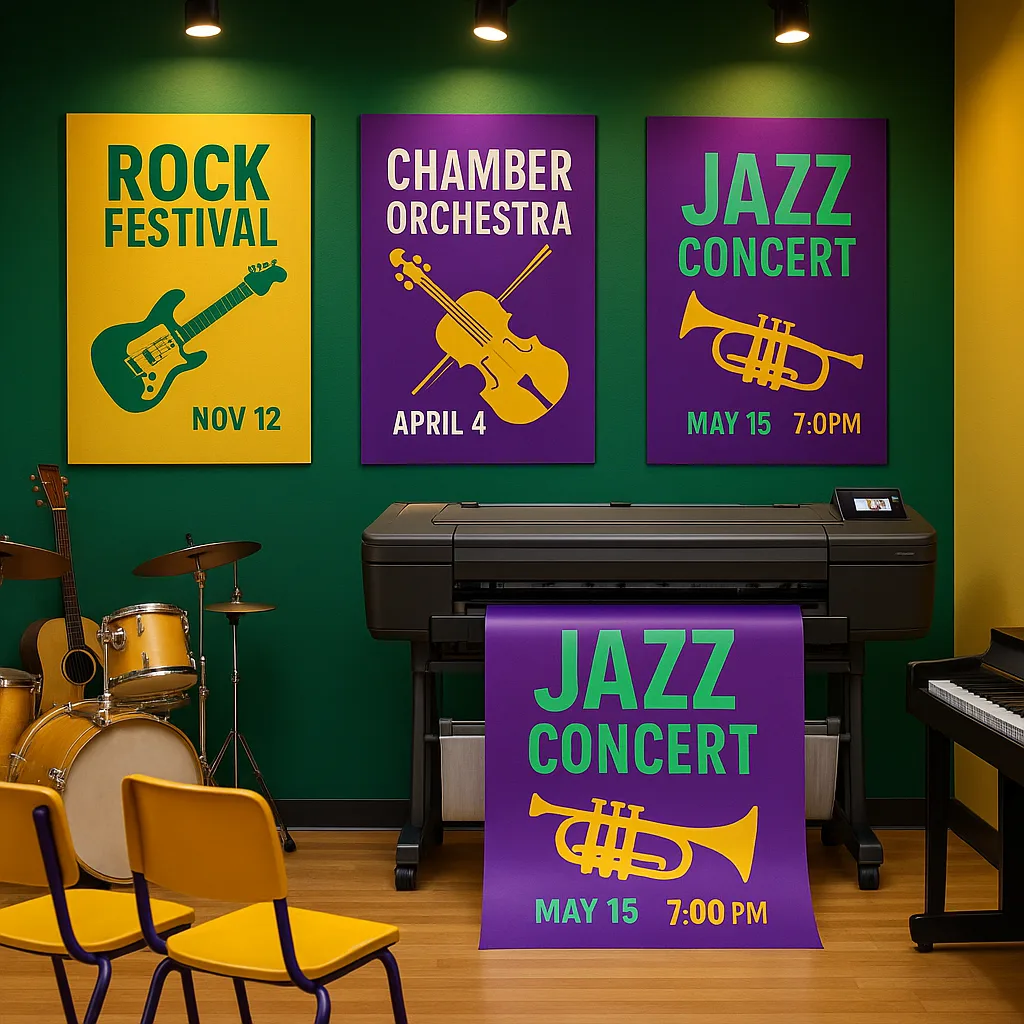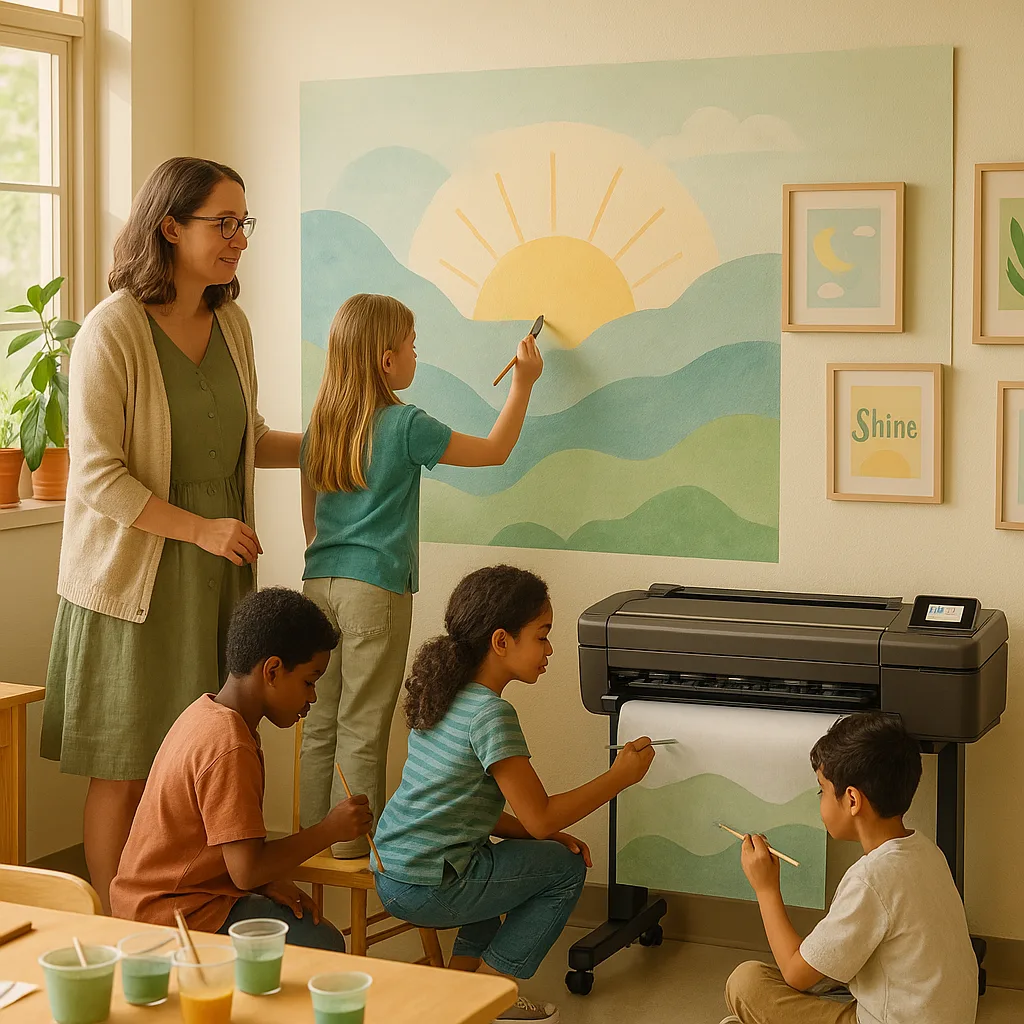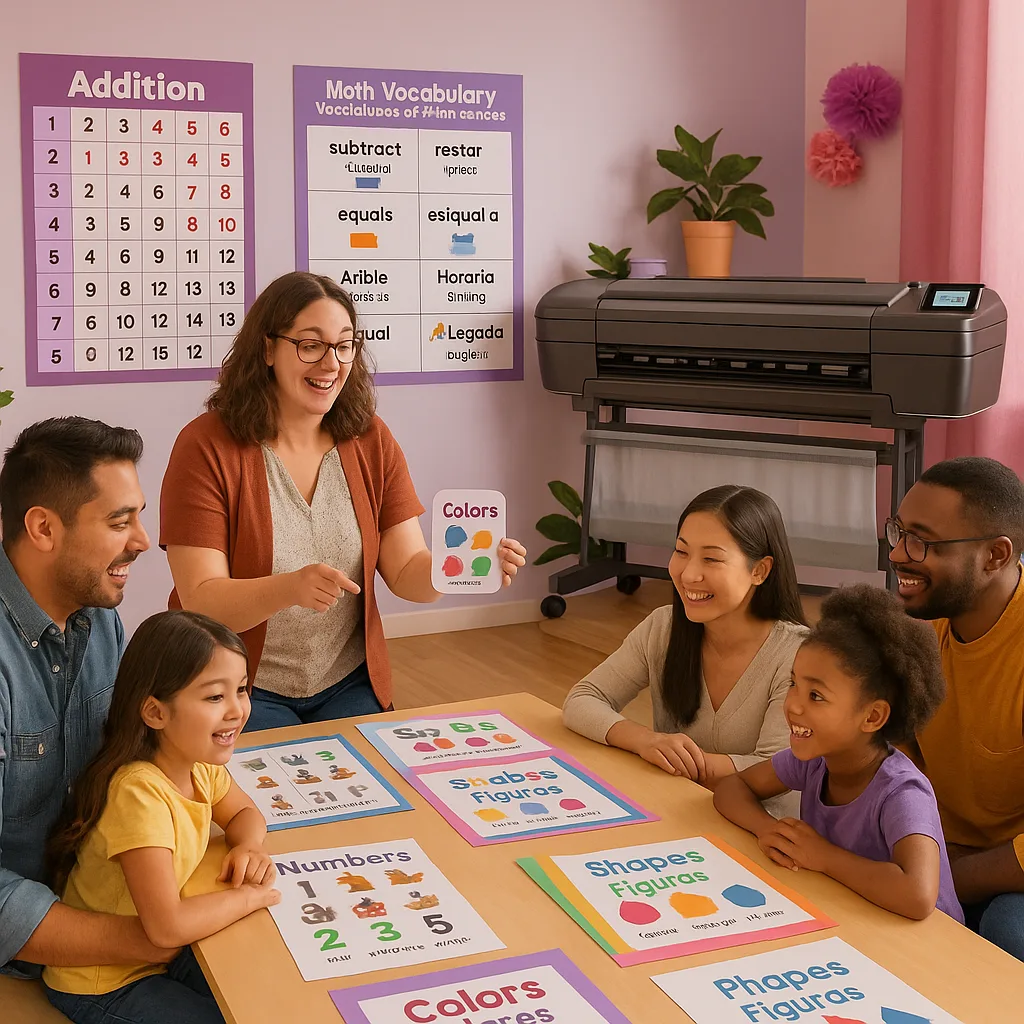
School Poster Maker Mindfulness Pathways Guide
Transform Busy Hallways Into Calming Journeys
Picture this: It’s 11:47 AM, and my first-graders are about to transition from math centers to lunch. Usually, this means twenty tiny humans bouncing off the walls like pinballs in a machine. But today? They’re taking deep breaths while following our new hallway mindfulness posters, moving calmly from Point A to Point B. The secret weapon that made this possible? Our school poster maker mindfulness pathways.
Why School Poster Maker Mindfulness Pathways Work
Research from the Mindful Schools organization shows that visual mindfulness cues reduce transition-time incidents by up to 35%. When I discovered this stat during my student teaching, I knew I had to try it. However, I quickly learned that tiny 8.5×11 printouts get lost in busy hallways. That’s when having a poster making machine became a game-changer.
Large-format mindfulness posters catch students’ attention naturally. Furthermore, they provide consistent visual anchors that help children self-regulate without adult intervention. My mentor teacher calls them “invisible assistants” because they guide behavior even when we’re not there.

The Science Behind Visual Mindfulness
According to research published in the Journal of School Psychology, children process visual information 60,000 times faster than text. This makes poster-based mindfulness cues incredibly effective for young learners. Additionally, repetitive exposure to calming visuals activates the parasympathetic nervous system, helping students shift from fight-or-flight mode to rest-and-digest.
In my classroom, I’ve noticed that students who struggle with traditional verbal reminders respond beautifully to visual pathways. For instance, one of my most energetic students now automatically stops at our “breathing station” poster without any prompting from me.
Essential Elements of Mindfulness Pathway Posters
Creating effective mindfulness pathways requires thoughtful design. After experimenting with different approaches (and yes, some flopped spectacularly), I’ve identified key components that actually work. First, use colors strategically—blues and greens promote calm, while avoiding red keeps energy levels steady.
Try It Tomorrow: Breathing Station Basics
- Place posters at child eye-level (36-48 inches for elementary)
- Use simple shapes like circles or stars for breathing guides
- Include both text and visual instructions for all learners
Movement patterns work best when integrated into existing traffic flow. Therefore, I design posters that guide students along their natural path rather than forcing detours. My hallway features a series of footprint posters leading to different destinations, each with a mindfulness prompt.
Grounding Techniques That Stick
The most successful grounding posters use the 5-4-3-2-1 technique adapted for hallway use. Students identify five things they see, four they can touch (wall textures work great), three they hear, two they smell, and one positive thought. Because this engages multiple senses, it effectively interrupts anxiety spirals.
One particularly effective design features a tree with different textures printed on coated poster paper. Students touch each branch while practicing their grounding sequence. Moreover, the durable coating means hundreds of little hands won’t wear it down.
Implementing School Poster Maker Mindfulness Pathways
Starting small prevents overwhelm—both for you and your students. Begin with one high-traffic area, perhaps the path from your classroom to the cafeteria. Once students master that route, expand gradually. This approach mirrors research from Edutopia showing incremental implementation yields better long-term results.
Teaching students how to use mindfulness pathways requires explicit instruction initially. Nevertheless, after two weeks of practice, most children internalize the routines. I spent ten minutes daily practicing hallway mindfulness for the first week, then reduced to quick reminders before transitions.
Design Tips From Real Classroom Experience
Simple designs trump complex ones every time. While elaborate illustrations look pretty, stressed students need clarity. Thus, I stick to basic shapes, limited text, and high contrast between background and foreground. The Poster Studio Express design service helped me refine my initial sketches into professional-looking guides.
Size matters more than you’d think. Breathing exercise posters need to be large enough for groups to use simultaneously. Meanwhile, individual grounding technique posters can be smaller since students use them one at a time. Having access to various print sizes through our school’s poster making machine lets me customize for each purpose.
Quick Win Alert! 🌟
Start with a single “Take 5” breathing poster at your classroom door. Students breathe in for 5, hold for 5, out for 5 before entering. Total game-changer for post-recess transitions!
Measuring Success and Making Adjustments
Data collection doesn’t need to be complicated. I track hallway incidents before and after implementing each new poster. Additionally, I note which designs students gravitate toward naturally. This informal assessment guides my next design choices.
Student feedback provides invaluable insights. During our weekly class meetings, we discuss which mindfulness tools help most. Surprisingly, my students requested more movement-based options after our initial rollout focused heavily on breathing exercises. Consequently, I added stretching stations and balance challenges to our pathways.
Adapting for Different Age Groups
What works for first grade won’t necessarily work for fifth. Younger students respond to character-based guides (think friendly animals demonstrating techniques), while older students prefer abstract designs. Because our school poster maker handles various styles easily, I can create age-appropriate versions of the same concept.
Middle schoolers particularly benefit from choice. Instead of one prescribed path, I offer multiple mindfulness options at transition points. Students select what they need in that moment—maybe deep breathing before a test or energizing movements after sitting too long.
Building School-Wide Buy-In
Success multiplies when entire schools adopt mindfulness pathways. However, getting colleague support requires demonstrating value first. I invited other teachers to observe my class using our hallway system during transitions. Seeing the calm, organized movement convinced several skeptics.
Sharing resources makes adoption easier for busy teachers. Therefore, I created a template library other staff can modify for their needs. The lifetime support from Poster Studio Express means we can continuously refine designs without worrying about additional costs.
Try It Tomorrow: Starter Pathway Kit
- Create one breathing station poster (24″×36″ minimum)
- Design simple footprint markers for directional guidance
- Add one grounding technique poster at a natural stopping point
Long-Term Impact on School Culture
Three months after implementing our mindfulness pathways, the change in school climate is remarkable. Office referrals for hallway behavior dropped 40%, aligning with findings from the Collaborative for Academic, Social, and Emotional Learning (CASEL). More importantly, students report feeling calmer throughout their day.
Parents notice differences at home too. Several families requested copies of our breathing exercises to use during homework time. Subsequently, I created take-home versions using our poster making machine, strengthening the school-home connection around mindfulness practices.
Resources for Continued Growth
Professional development around mindfulness enhances poster effectiveness. Workshops from organizations like Mindful Schools provide deeper understanding of neuroscience behind these practices. Combining this knowledge with quality visual tools creates powerful learning environments.
The cost-effective printing means experimenting with new designs won’t break budgets. In fact, I update our pathways seasonally, incorporating student artwork and fresh themes while maintaining core mindfulness principles.
Your Next Steps
Ready to transform your school’s hallways? Start by observing current transition patterns and identifying stress points. Next, sketch simple mindfulness interventions for those areas. Finally, bring your vision to life with professional-quality posters that withstand daily use.
Remember, perfect is the enemy of good. Your first mindfulness pathway doesn’t need to be elaborate—it just needs to exist. Even one well-placed breathing poster can spark positive change. From there, you can build a comprehensive system that supports every student’s emotional well-being.
Creating school poster maker mindfulness pathways transformed my teaching practice and our school culture. These visual guides provide consistent support when students need it most. Best of all, they work silently in the background, allowing children to develop self-regulation skills that last a lifetime. 🌈
Ready to Create Your Mindfulness Pathways?
Transform your school hallways today! Call us at 866-788-7900 to discuss the perfect poster solution for your mindfulness journey.







